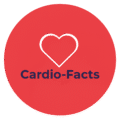Exercise for heart health is one of the most effective and scientifically proven ways to reduce your risk of cardiovascular disease. Regular physical activity can lower blood pressure, improve cholesterol levels, and protect against heart attack and stroke. But here’s the question many people ask: how much exercise do you really need to keep your heart strong?
In this article, we’ll break down the official guidelines from leading health organizations, explain the difference between moderate and vigorous exercise, and show you how simple strength training fits into the picture. Plus, we’ll recommend practical tools that make staying active easier, so you can confidently build habits that protect your heart for life.
The Science: Official Guidelines for Exercise and Heart Health
According to the World Health Organization (WHO, 2020), the European Society of Cardiology (ESC, 2021), and the American Heart Association (AHA, 2019), the minimum recommended exercise levels for adults are:
- 150–300 minutes of moderate-intensity aerobic activity per week
- OR 75–150 minutes of vigorous-intensity aerobic activity per week
- PLUS strength training at least 2 times per week
Exceeding these minimums provides additional cardiovascular benefits, but these thresholds are the baseline proven to lower your risk of heart attack, stroke, and high blood pressure.
What Counts as Moderate vs Vigorous Activity?
Not all exercise is created equal. Here’s how to tell the difference:
- Moderate activity: You can talk, but not sing, during the exercise. Examples: brisk walking, casual cycling, light swimming, gardening.
- Vigorous activity: You can only say a few words before pausing for breath. Examples: running, fast cycling, HIIT workouts, competitive sports.
Both types are beneficial—you can choose the one that best fits your lifestyle.
Why Strength Training Matters for the Heart
Many people think only aerobic exercise matters for heart health. In reality, strength training plays an essential role too.
Benefits include:
- Lowering blood pressure
- Improving cholesterol balance
- Reducing body fat and increasing lean muscle
- Enhancing insulin sensitivity
Simple bodyweight routines or resistance bands are enough to start. The key is consistency.
How to Get Started Without Feeling Overwhelmed
If 150 minutes a week sounds like a lot, don’t worry—you can break it down into small, manageable sessions:
- Three 10-minute brisk walks a day = 30 minutes
- 5 sessions of 30 minutes = 150 minutes per week
- Two short strength workouts per week
Start small, build gradually, and use tools to stay motivated.
Tools That Can Help You Stay Active (Affiliate Picks)
To make it easier to follow these recommendations, here are some practical tools that support heart-healthy exercise.
🕒 Track Your Activity with a Fitness Watch
Monitoring your steps, heart rate, and workouts keeps you accountable.
- Fitbit Charge 6 – Affordable and reliable fitness tracker.
- Apple Watch Series 9 – Premium smartwatch with advanced heart monitoring.
- Garmin Venu Sq 2 – Great for runners and outdoor enthusiasts.
🏋️ Stay Strong with Home Equipment
Strength training doesn’t require a gym. A few basics can make a big difference.
- Set of Resistance Bands – Versatile, portable, and beginner-friendly.
- Adjustable Dumbbells – Save space while allowing progressive training.
- Yoga Mat – Perfect for floor exercises and stretching.
Bottom Line
You don’t need a gym membership or hours of free time. All it takes is:
- 150 minutes of moderate activity OR 75 minutes of vigorous activity per week
- Strength training twice a week
With simple habits and the right tools, you can protect your heart for life.
⚠️ Affiliate Disclosure
Some links in this article are affiliate links. If you purchase through them, Cardio-Facts earns a small commission — at no extra cost to you. We only recommend tools we trust and believe in based on clinical experience.
📩 Stay informed & get your free gift!
Join our free newsletter for exclusive heart health updates and get instant access to the PDF guide “7 Proven Tips to Protect Your Heart After 40.”
⚠️ Disclaimer: The content on Cardio-Facts is for informational and educational purposes only and does not constitute medical advice. Always consult a qualified healthcare professional regarding your health. Read our full disclaimer and legal policies.
